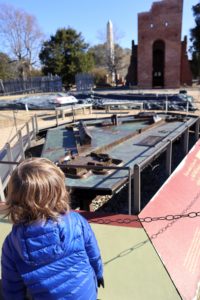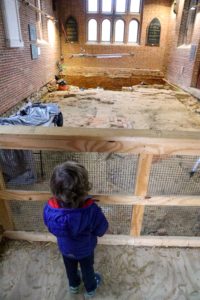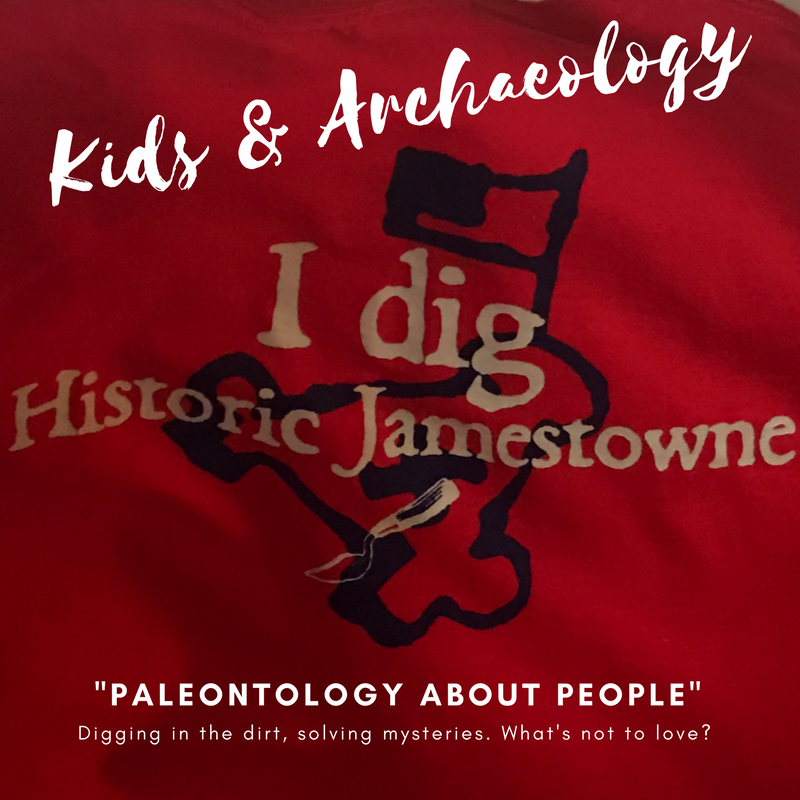Disclosure: This post may contain affiliate links. If you click a link and purchase a recommended item, I may receive a commission, although there is no additional cost to you.
My four-year-old was the last person out of a national park one evening this winter. And he was so disappointed that he’d felt rushed that he begged to go back the next day. Not one of the big Western parks with breathtaking vistas, or even one of the East coast nature parks teeming with wildlife and hiking options. No, this little guy was utterly entranced by the story of the first permanent English Colony in what became America.

Historic Jamestowne is one of the two principle units of Colonial National Historical Park, the other being the Revolution’s last battlefield at Yorktown. The park is cooperatively managed by the National Park Service, which owns the land, and Preservation Virginia, a nonprofit organization with long roots at the site that has performed extensive archaeological work over the past two decades. Many of the most fascinating finds of this Jamestown Rediscovery project are displayed at the Archaearium, which is far more focused than the NPS visitor center.
Almost immediately upon arrival he was smitten with the concept of archaeology. I think it’s a fascinating field of study, but even I was surprised by how accurately he could explain the idea and why it appealed to him. It was, in his words, “Paleontology about People.”
Anyone who has spent time around preschoolers knows that dinosaurs and dinosaur hunting represent the pinnacle of real world learning obsessions. Almost unimaginably cool creatures that could almost be imaginary, except for the bones they left behind. Oh, and you get to dig in the dirt for a living, so no one questions why children aspire to the profession.
When you think about it, archaeology isn’t so different. There is dirt to be excavated, items to be uncovered, mysteries to be solved. But instead of creatures we can never hope to encounter, the quarry is people just like us. And the scale of elapsed time under discussion is more accessible and easier to comprehend.
Historic Jamestowne was an outstanding place to receive an introduction to archaeology. The setting on the James River is beautiful. (Sadly, that vista is under threat by a proposal to build a massive electricity transmission line with towers nearly 300 feet tall across the river. The National Trust for Historic Preservation and other partner groups are pursuing legal recourse to block the project.)

Because work is ongoing, chances are likely that you will encounter the process in action and/or volunteers who can explain the work being done. This was great for us, as we have made a real point of identifying who are experts we can interact with. The folks we found on site were all welcoming and enthusiastic. While they may have initially been prepared to launch into a general overview of why grownups were digging holes, as soon as they realized that this little guy had somewhat deeper questions, they interacted with him thoughtfully and left him feeling respected. Kids know when they’re being humored or spoken down to. And because the opposite happened, I think that reinforced his impression that this whole archaeology thing was right up his alley.
Having watched excavations in action, we were all primed to see some of the fascinating artifacts unearthed on display in the Archaearium. The items on display instantly dispel any lingering trouble you may have had remembering that the settlers were ordinary people not so different from us. However, be warned before going into the museum with small children: There are several sets of human remains on view.
The displays are done tastefully and serve to further showcase how archaeology can help solve mysteries — what assortment of clues enabled researchers to confidently identify an individual burial, for example. If you paid attention while exploring the dig area, you’ll know that a number of graves have been found and excavated. But most children will not have seen a human skeleton before (Halloween decorations notwithstanding) and the encounter may prompt some philosophical questions that go deeper than parents, perhaps, were prepared for. If you have a squeamish child, or one who has not fully grasped the concept of death, use your judgement on whether to steer your little ones wide of this area, which is somewhat in an alcove removed from the main flow of the exhibit.
While we were able to navigate that portion of the museum without undue drama, I confess that I’m glad we aren’t yet reading independently. Thus, I was able to steer us clear of the interpretive panel explaining the evidence gathered for the period known as the “starving time,” with its heading referencing survival cannibalism. That’s a conversation I’d rather put off for a few years! The analysis done on the subject is fascinating, however, so both of us adults slipped back independently to read it ourselves. We even picked up the two books that have been published on the subject.
Final Verdict: Archaeology is a surprisingly kid-friendly subject, and Jamestown is a great introduction. Just be aware that there are some tragic parts of the colony's story and be prepared to either explain them thoughtfully -- or to dodge and redirect!

